Fall 2023 SDLC111
Cultural Post #3
국악 Gugak
David Kim
30262888
david.kim123@richmond.edu
Korean traditional music 국악 Gugak is a diverse and dynamic form of music that has its roots deeply embedded in Korea's cultural history. It encompasses a wide range of vocal and instrumental music, dance, and rituals.
During the Goryeo Dynasty, Gugak was divided into three categories. First, 아악 Aak, which originates from the Song Dynasty, was mainly used for rituals. Second, 당학 Dangak, which was already used, was commonly used for meetings with the king. Lastly, 향악 Hyangak, which was already used, was mainly used to learn Korean in informal settings.
Gugak utilizes a variety of traditional instruments. 가야금 Gayageum is a traditional Korean zither with 12 strings. It can be plucked with fingers or with a small bamboo stick. 거문고 Geomungo is another type of zither, but it is larger and has six strings. It is played by plucking the strings with a bamboo stick, making deep and resonant sounds. 대금 Daegum is a large bamboo flute with a buzzing membrane that produces a unique sound. 해금 Haegum is a two-stringed fiddle played with a bow. It is well known for its thin and high sound. 아쟁 Ajaeng is a bowed string instrument with strings made of twisted silk, known for its distinctive resonant sound. 피리 Piri is a double-reed instrument that is similar to an oboe. It has a cylindrical bore and a metal mouthpiece. 장구 Janggu is a traditional double-headed drum shaped like a hourglass. It has a wooden body and two different-sized heads, producing both high and low sounds. 북 Buk is also a traditional Korean drum, usually played with a stick by one hand. It has a wooden frame and a leather head.
Gugak often features distinct rhythms and scales that set it apart from other music. 장단 Jangdan refers to rhythmic patterns in Korean traditional music. These patterns are the rhythmic framework upon which the music is built. There are various jangdan patterns with their own unique feel and purpose. Some examples are 자진모리 장단 Jajinmori Jangdan, 굿거리장단 Gutgeori Jangdan, and 휘모리장단 Hwimori Jangdan. 악삭 Aksak is a type of irregular rhythm that is often found in gugak. It deviates from the regular meter found in many Western musical traditions. The use of aksak rhythms adds complexity and a sense of unpredictability to the music. 산조 Sanjo is a form of Korean traditional instrumental music characterized by solo performances. It often features complex rhythmic patterns that allow the performer to showcase their improvisational skills within a specific rhythmic framework. 평조 Pyeongjo is a traditional Korean mode or scale. It is similar to the Western major scale but has distinct intervals. The pyeongjo scale contributes to the bright and uplifting character. 향조 Hyangjo is another traditional mode that is similar to the Western minor scale but with unique intervals. It imparts a more contemplative and introspective quality to the music. 당악 음계 Dangak scales features complicated scales to contribute to the formal and ceremonial nature of formal music. 풍류 Pungnyu is a mode associated with folk music. It has a distinct and lively character, reflecting the celebratory and communal aspects of traditional Korean festivals and gatherings.
Institutions and musicians work to ensure that traditional music continues to thrive. Additionally, some contemporary artists incorporate elements of gugak into modern genres, creating a fusion of traditional and contemporary sounds.
https://encykorea.aks.ac.kr/Article/E0006374
http://www.sctoday.co.kr/news/articleView.html?idxno=4832
https://www.koreatravelpost.com/gugak-music/
가야금 Gayageum
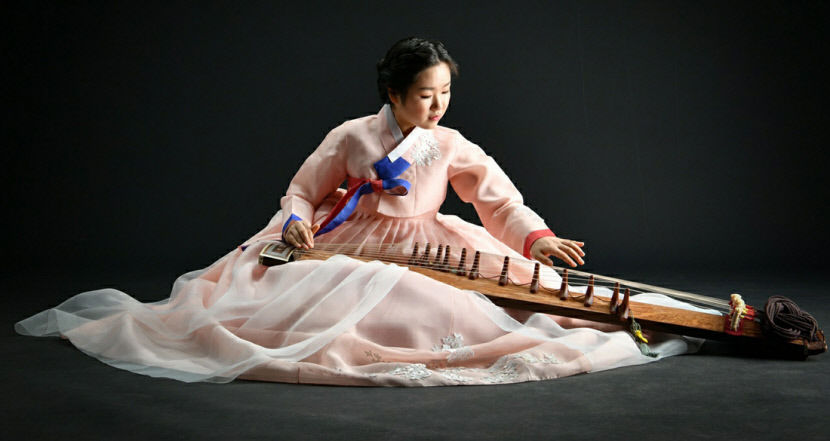
거문고 Geomungo
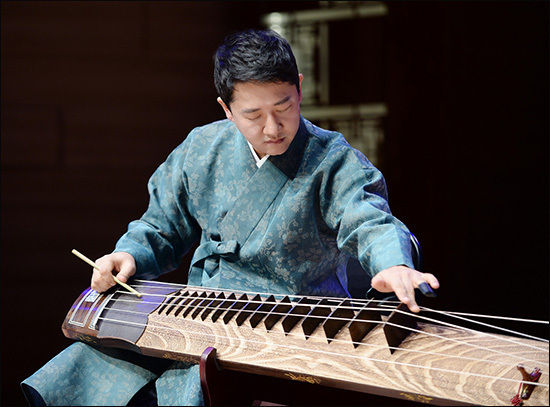
대금 Daegum
해금 Haegum
아쟁 Ajaeng
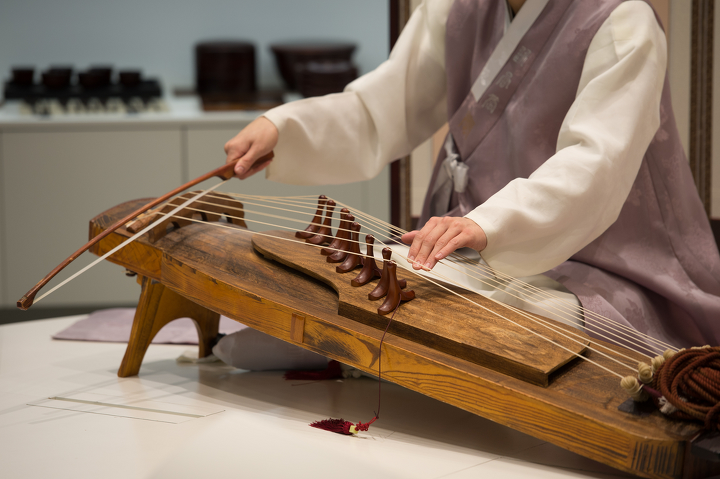
피리 Piri
![말랑말랑 국악 이야기] 부는 악기는 왜 모두 '피리'일까?](https://kid.chosun.com/site/data/img_dir/2014/03/13/2014031302661_1.jpg)
장구 Janggu
![문인이 만난 우리 시대의 명인] ⑩ 무형문화재 기능보유자 송진호 :: 경남신문](https://www.knnews.co.kr/edb/nimages/2022/07/2022070708044072559.jpg)
북 Buk

Gugak performances:
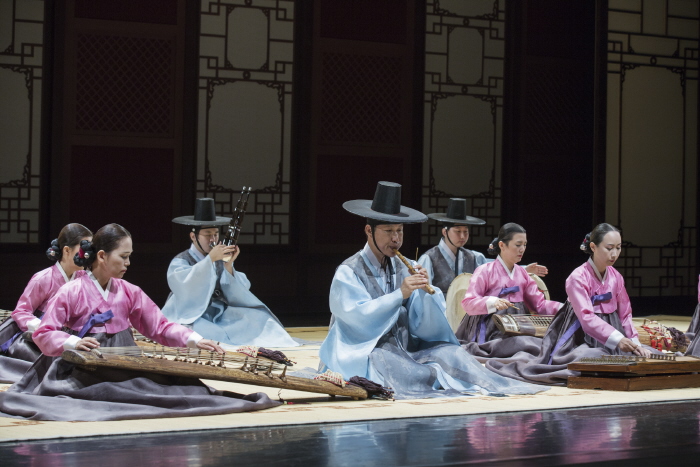
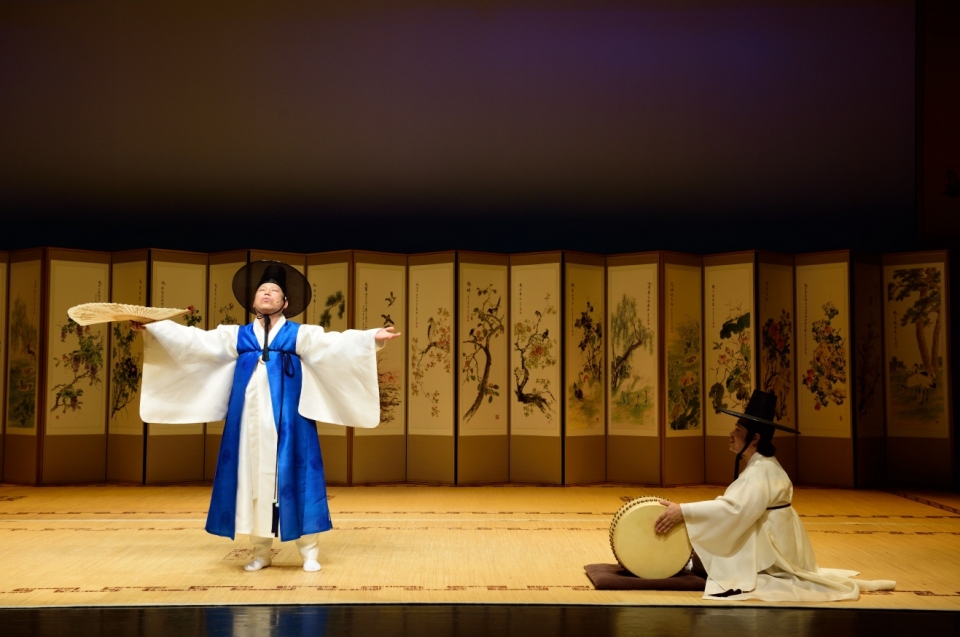
1 hour video of Gugak performance



Comments
It was very interesting to learn about traditional Korean music. I find the 가야금 Gayageum and 거문고 Geomungo unlike any Western instruments I have ever seen, at least in appearance. I also find it very interesting how so many of these traditional instruments seem meant to played while kneeling, whereas traditional Western instruments are mostly played seated on a chair or standing.